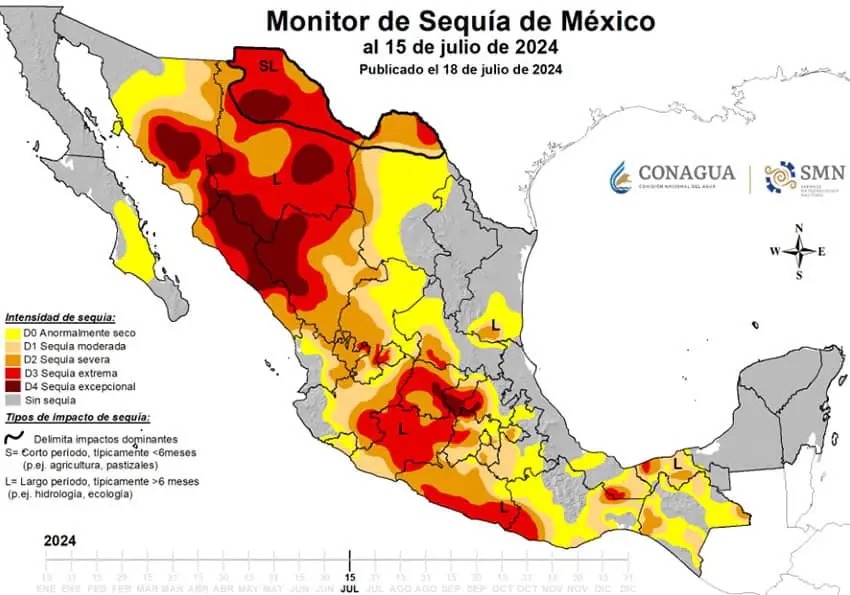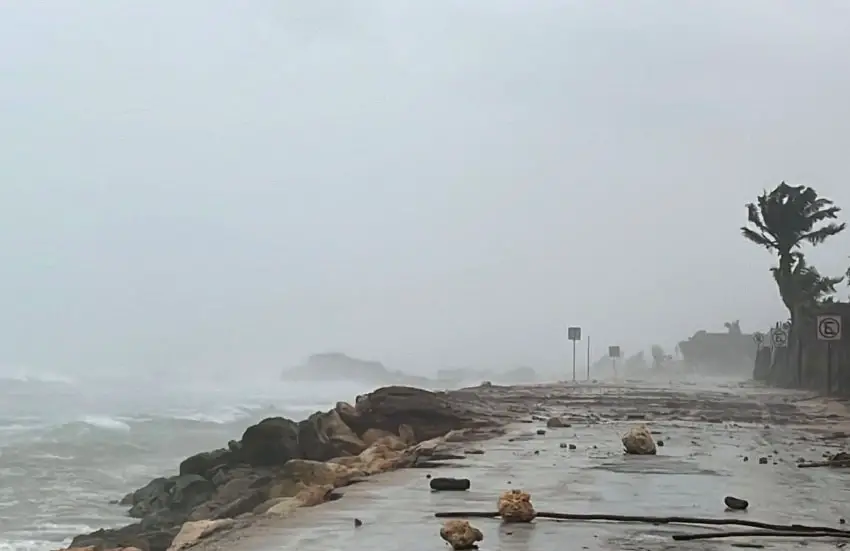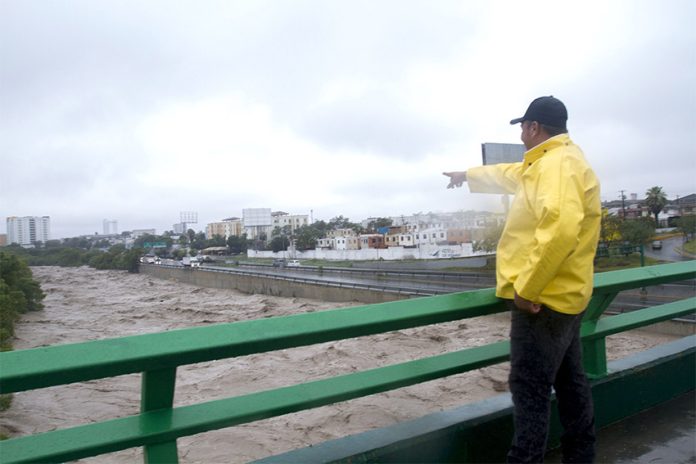Recent torrential downpours and a generous rainy season have significantly increased reservoir levels across Mexico, helping water stores recover from a prolonged drought.
Mexico’s rainiest June in more than 80 years also reduced drought conditions across the country, according to the National Meteorological Service (SMN). From June 15 to 30, the area of drought shrank from 73.79% of the country to 54.71%.

This week, the National Water Commission (Conagua) reported that the country’s 210 principal reservoirs had risen from 38% to 42% capacity as of July 15. Those 210 reservoirs represent 92% of Mexico’s water storage capacity.
June’s rainfall was aided by several meteorological events — including Hurricanes Alberto and Beryl — during the second half of the month. Tropical Storm Chris in early July also contributed as rainfall from June 15 to July 14 was 64% above average.
The rains have also helped the Cutzamala hydraulic system recover. Conagua reported that the three principal reservoirs of the system, which supplies 25% of Mexico City’s water, saw capacity rise from 26.9% to 29.1% during the first two weeks of July.
The weekend forecast also looks wet as Tropical Wave 11 will wash over western Mexico, drifting inland to the Bajío region and the Valley of México.

Weather forecaster Meteored says Tropical Wave 12 will blow across the Yucatán Peninsula on Friday night and continue past Chiapas and Tabasco to the Isthmus of Tehuantepec on Saturday. Meteorologists expect the system to reach Mexico City on Sunday.
It’s not all good news, however.
Heavy winds accompanying the tropical storms caused damage in the Yucatán Peninsula and along the northeast coast as far inland as Monterrey, which suffered 500 million pesos worth of damage from the passage of Alberto.
The excessive rains also forced the authorities to mount several emergency operations, Conagua reported.
Authorities released water from a dam in Jalisco to relieve stress, and officials in Veracruz responded to the failure of a water-pumping station. Emergency personnel also had to scrub clean 2,300 meters of drain pipe in southern Sonora after heavy rains clogged its ducts with sand and silt.
Still, Mexico requires more rain to offset the extended drought that had impacted 89% of Mexico’s territory. Nearly 60% of the country was experiencing severe to exceptional drought on June 1, and total precipitation through May was 50% below average, making it the second-driest May ever recorded, on top of being the hottest May on record.
Even with the rains, the unseasonable heat has not dissipated entirely. Temperatures soared past 47 C in Baja California and Sonora from July 8-14. And on July 9, the Baja California border city of Mexicali set a new record when the mercury hit 52.4 C.
With reports from El Universal, Conagua and Meteored
